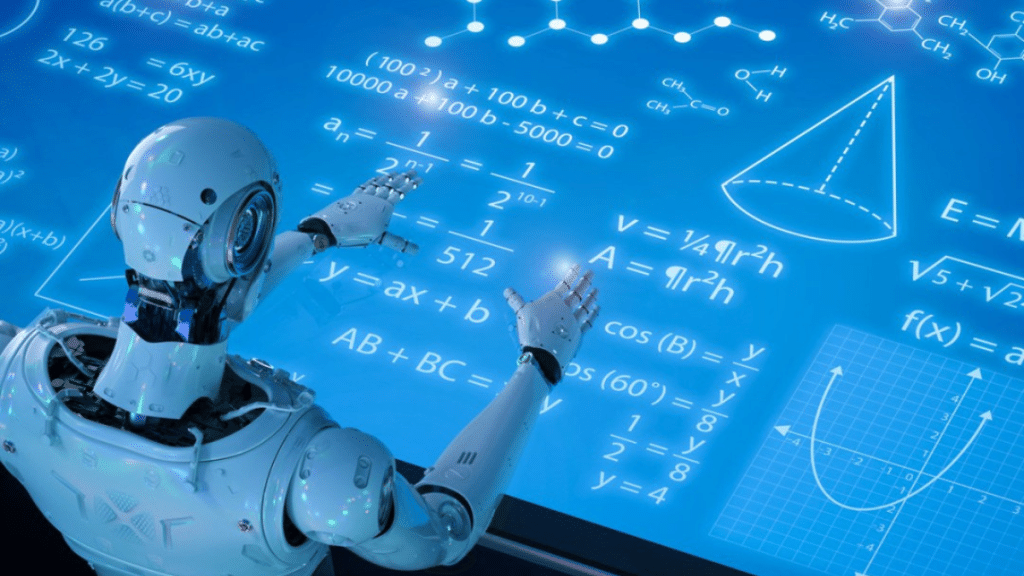Data scientists are the new explorers in a world where data is the new oil, delving into huge knowledge reserves to discover trends, ideas, and predictive capability. Still, mathematics drives every artificial intelligence invention, prediction model, or machine learning algorithm. It’s time to shift mathematics from the passenger seat to the driver’s seat of your learning path if you want to become a data scientist. This is why mathematics is the basis of modern data science, not just a bonus, and how mastering it can be your greatest benefit in this fast-moving area.
Fosters understanding of data algorithms.
Tools such as Python, TensorFlow, and Tableau first give the impression that data science is only visualization and coding. But that is only the surface. Linear algebra, probability, statistics, and calculus contain the actual muscle. Every neural network and matrix transformation is driven by linear algebra. Understanding vectors, matrices, and eigenvalues will help you grasp how models represent and change data.
Probability and statistics help you validate your models, estimate parameters, and interpret data uncertainty. Fundamental ideas include Bayes’ Theorem, distributions, and hypothesis testing. Optimizing and backpropagation in neural networks require calculus, specifically derivatives and gradients. Algorithm creation, decision trees, and data structures all depend somewhat on discrete mathematics and logic. These are no longer conceptual academic topics. As a data scientist, you’ll construct everything mathematically.
Better intuition.
Understanding math more than just a syllabus checkbox helps you to think more intelligently. Once you grasp the mathematics underlying a model, you stop treating it as a black box. You understand why one model beats another, when it could fail, and how to change its settings properly. Rather than just clicking buttons or hyperparameter tuning without a clue, you contemplate bias-variance trade-offs, overfitting, and model complexity. This strong instinct provides you with:
- Decision confidence
- Flexibility in applying the right models to the correct problems
- Not just presenting stakeholders with a chart, but also having the capacity to justify your findings.
From data analyst to data scientist.
One often-made career error is believing that being a data analyst is the same as being a data scientist. Math fluency is the main distinction between the two roles, even if both manage data. Descriptive statistics, that is, summarizing past data, is frequently what analysts pay attention to. Nevertheless, data scientists create models to forecast results and conduct tests to disprove theories.
That jump from description to prediction calls for mathematical modeling, something you can’t outsource or fake. Want to rise the ladder and go from cleaning datasets to directing machine learning initiatives? Be serious about your mathematical basis.
Real issues call for actual mathematics.
Here’s the truth: actual data is incomplete, noisy, and messy. Cookie-cutter designs won’t do in these circumstances. You must experiment with presumptions, adjust algorithms, and develop new indicators. For instance, in customer churn forecasting, you will need unique loss functions if the cost of false positives is twice that of false negatives. These questions call for math-driven thought and more than a superficial knowledge:
There will be times when you encounter a wall. That’s when you need help from a math doer, be it a peer, mentor, or expert skilled in mathematical modeling who may help you break through. Access to someone with math expertise can greatly speed up your learning curve.
Gateway to AI and machine learning.
Most current data science solutions are rooted in machine learning systems and are fundamentally mathematical. Gradient descent is the underpinning of most machine learning algorithms, ranging from deep learning to logistic regression. Without calculus and linear algebra, it’s merely a strange loop in the code. With arithmetic? It’s a strong, adaptable tool you may debug, re-engineer, and optimize. Should you want to:
- Develop your models from the beginning,
- Know how algorithms grow,
- Support open-source machine learning tools, either or
- Test the limits of artificial intelligence.
You must go beyond surface knowledge and accept the mathematical depth behind the models.
Supports optimization.
A meticulously adjusted optimization approach drives every excellent machine learning model. In data science, optimization is everything; it’s how models learn from data, adjust parameters, and improve performance. Here’s how math helps:
- Convex optimization helps you locate global minima in simpler logistic regression or SVM models.
- Like stochastic gradient descent (SGD), gradient-based optimization aids in effective deep learning model training,
- Constraint optimization allows you to include real-world constraints, such as budget or time constraints, into decision-making models, and
- Math underpins regularization methods like L1 and L2 that limit overfitting and boost generalization.
You are flying blind, adjusting learning rates, epochs, and loss functions without knowing the why if you don’t grasp the mathematical foundation of optimization. But with a firm grasp, you might:
- Find the reasons why a model is failing to converge.
- Set custom optimization techniques, and
- Create fresh educational approaches for challenging fields.
Optimization is fundamental to how models learn; therefore, it’s not a specialized skill. It’s a math-rich field you cannot overlook if you want to develop better models, address actual issues, and innovate.
What sets you apart in a competitive and rapidly changing field like data science is your capacity for deep thinking, imaginative modeling, and correct problem solving, rather than just your proficiency with technologies. Math gives that edge. Investing in your math abilities will be fruitful whether you’re starting or far down your road, not only in your capacity to get jobs but also in your capacity to lead, create, and help to define the future of data.
Don’t hesitate to connect, work with, or seek help from a mathematics doer when the concepts become challenging. Every brilliant data scientist rests on the shoulders of those who assisted them in mastering the arithmetic driving the magic, after all.
